- Home
- George R. R. Martin
Tuf Voyaging Page 20
Tuf Voyaging Read online
Page 20
Twenty tentacles had attached themselves when the ship abruptly listed to starboard. Survivors slid across the deck and into the sea. The ship tilted more and more. Something was pushing it over, pulling it down. Water sloshed across the side, and into the open hatchways. Then the ship began to break up.
Haviland Tuf stopped the projection, and held the image on the large viewscreen: the green sea and golden sun, the shattered vessel, the pale embracing tentacles. “This was the first attack?” he asked.
“Yes and no,” replied Kefira Qay. “Prior to this, one other harvester and two passenger hydrofoils had vanished mysteriously. We were investigating, but we did not know the cause. In this case, a news crew happened to be on the site, making a recording for an educational broadcast. They got more than they bargained for.”
“Indeed,” said Tuf.
“They were airborne, in a skimmer. The broadcast that night almost caused a panic. But it was not until the next ship went down that things began to get truly serious. That was when the Guardians began to realize the full extent of the problem.”
Haviland Tuf stared up at the viewscreen, his heavy face impassive, expressionless, his hands resting on the console. A black-and-white kitten began to bat at his fingers. “Away, Foolishness,” he said, depositing the kitten gently on the floor.
“Enlarge a section of one of the tentacles,” suggested the Guardian beside him.
Silently, Tuf did as she bid him. A second screen lit up, showing a grainy close-up of a great pale rope of tissue arching over the deck.
“Take a good look at one of the suckers,” said Qay. “The pink areas, there, you see?”
“The third one from the end is dark within. And it appears to have teeth.”
“Yes,” said Kefira Qay. “All of them do. The outer lips of those suckers are a kind of hard, fleshy flange. Slapped down, they spread and create a vacuum seal of sorts, virtually impossible to tear loose. But each of them is a mouth, too. Within the flange is a soft pink flap that falls back, and then the teeth come sliding out—a triple row of them, serrated, and sharper than you’d think. Now move down to the tendrils at the end, if you would.”
Tuf touched the console, and put another magnification up on a third screen, bringing the twisting snakes into easy view.
“Eyes,” said Kefira Qay. “At the end of every one of those tendrils. Twenty eyes. The tentacles don’t need to grope around blindly. They can see what they are doing.”
“Fascinating,” said Haviland Tuf. “What lies beneath the water? The source of these terrible arms?”
“There are cross-sections and photographs of dead specimens later on, as well as some computer simulations. Most of the specimens we took were quite badly mangled. The main body of the thing is sort of an inverted cup, like a half-inflated bladder, surrounded by a great ring of bone and muscle that anchors these tentacles. The bladder fills and empties with water to enable the creature to rise to the surface, or descend far below—the submarine principle. By itself it doesn’t weigh much, although it is amazingly strong. What it does, it empties its bladder to rise to the surface, grabs hold, and then begins to fill again. The capacity of the bladder is astounding, and as you can see, the creature is huge. If need be, it can even force water up those tentacles and out of its mouths, in order to flood the vessel and speed things along. So those tentacles are arms, mouths, eyes, and living hoses all at once.”
“And you say that your people had no knowledge of such creatures until this attack?”
“Right. A cousin of this thing, the Namorian man-of-war, was well-known in the early days of colonization. It was sort of a cross between a jellyfish and an octopus, with twenty arms. Many native species are built along the same lines—a central bladder, or body, or shell, or what have you, with twenty legs or tendrils or tentacles in a ring around it. The men-of-war were carnivores, much like this monster, although they had a ring of eyes on the central body instead of at the end of the tentacles. The arms couldn’t function as hoses, either. And they were much smaller—about the size of a human. They bobbed about on the surface above the continental shelves, particularly above mud-pot beds, where fish were thick. Fish were their usual prey, although a few unwary swimmers met a bloody awful death in their embrace.”
“Might I ask what became of them?” said Tuf.
“They were a nuisance. Their hunting grounds were the same areas we needed—shallows rich with fish and seagrass and waterfruit, over mud-pot beds and scrabbler runs full of chameleon-clams and bobbing freddies. Before we could harvest or farm safely, we had to pretty much clean out the men-of-war. We did. Oh, there are still a few around, but they are rare now.”
“I see,” said Haviland Tuf. “And this most formidable creature, this living submarine and ship-eater that plagues you so dreadfully, does it have a name?”
“The Namorian dreadnaught,” said Kefira Qay. “When it first appeared, we theorized it was an inhabitant of the great deeps that had somehow wandered to the surface. Namor has been inhabited for barely a hundred standard years, after all. We have scarcely begun to explore the deeper regions of the seas, and we have little knowledge of the things that might live down there. But as more and more ships were attacked and sunk, it became obvious that we had an army of dreadnaughts to contend with.”
“A navy,” corrected Haviland Tuf.
Kefira Qay scowled. “Whatever. A lot of them, not one lost specimen. At that point the theory was that some unimaginable catastrophe had taken place deep under the ocean, driving forth this entire species.”
“You give no credit to this theory,” Tuf said.
“No one does. It’s been disproved. The dreadnaughts wouldn’t be able to withstand the pressures at those depths. So now we don’t know where they came from.” She made a face. “Only that they are here.”
“Indeed,” said Haviland Tuf. “No doubt you fought back.”
“Certainly. A game but losing fight. Namor is a young planet, with neither the population nor the resources for the sort of struggle we have been plunged into. Three million Namorians are scattered across our seas, on more than seventeen thousand small islands. Another million huddle on New Atlantis, our single small continent. Most of our people are fisherfolk and sea-farmers. When this all began, the Guardians numbered barely fifty thousand. Our guild is descended from the crews of the ships who brought the colonists from Old Poseidon and Aquarius here to Namor. We have always protected them, but before the coming of the dreadnaughts our task was simple. Our world was peaceful, with little real conflict. There was some ethnic rivalry between Poseidonites and Aquarians, but it was good-natured. The Guardians provided planetary defense, with Sunrazor and two similar craft, but most of our work was in fire and flood control, disaster relief, police work, that sort of thing. We had about a hundred armed hydrofoil patrol boats, and we used them for escort duty for a while, and inflicted some casualties, but they were really no match for the dreadnaughts. It soon became clear that there were more dreadnaughts than patrol boats, anyway.”
“Nor do patrol boats reproduce, as I must assume these dreadnaughts do,” Tuf said. Foolishness and Doubt were tussling in his lap.
“Exactly. Still, we tried. We dropped depth charges on them when we detected them below the sea, we torpedoed them when they came to the surface. We killed hundreds. But there were hundreds more, and every boat we lost was irreplaceable. Namor has no technological base to speak of. In better days, we imported what we needed from Brazelourn and Vale Areen. Our people believed in a simple life. The planet couldn’t support industry anyway. It is poor in heavy metals and has almost no fossil fuel.”
“How many Guardian patrol boats remain to you?” asked Haviland Tuf.
“Perhaps thirty. We dare not use them anymore. Within a year of the first attack, the dreadnaughts were in complete command of our sea lanes. All of the great harvesters were lost, hundreds of sea-farms had been abandoned or destroyed, half of the small fisherfolk were dead, and the other
half huddled fearfully in port. Nothing human dared move on the seas of Namor.”
“Your islands were isolated from one another?”
“Not quite,” Kefira Qay rephed. “The Guardians had twenty armed skimmers, and there were another hundred-odd skimmers and aircars in private hands. We commandeered them, armed them. We also had our airships. Skimmers and aircars are difficult and expensive to maintain here. Parts are hard to come by, and we have few trained techs, so most of the air traffic before the troubles was carried by airships—solar-powered, helium-filled, large. There was quite a sizable fleet, as many as a thousand. The airships took over the provisioning of some of the small islands, where starvation was a very real threat. Other airships, as well as the Guardian skimmers, carried on the fight. We dumped chemicals, poisons, explosives and such from the safety of the air and destroyed thousands of dreadnaughts, although the cost was frightful. They clustered thickest about our best fishing grounds and mud-pot beds, so we were forced to blow up and poison the very areas we needed most. Still, we had no choice. For a time, we thought we were winning the fight. A few fishing boats even put out and returned safely, with a Guardian skimmer flying escort.”
“Obviously, this was not the ultimate result of the conflict,” said Haviland Tuf, “or we would not be sitting here talking.” Doubt batted Foolishness soundly across the head, and the smaller kitten fell off Tuf’s knee to the floor. Tuf bent and scooped him up. “Here,” he said, handing him to Kefira Qay, “hold him, if you please. Their small war is distracting me from your larger one.”
“I—why, of course.” The Guardian took the small black-and-white kitten in hand gingerly. He fit snugly into her palm. “What is it?” she asked.
“A cat,” said Tuf. “He will jump out of your hand if you continue to hold him as if he were a diseased fruit. Kindly put him in your lap. I assure you he is harmless.”
Kefira Qay, appearing very uncertain, shook the kitten out of her hand onto her knees. Foolishness yowled, almost tumbling to the floor again before sinking his small claws into the fabric of her uniform. “Oh,” said Kefira Qay. “It has talons.”
“Claws,” corrected Tuf. “Tiny and harmless.”
“They aren’t poisoned, are they?”
“I think not,” said Tuf. “Stroke him, front to back. It will make him less agitated.”
Kefira Qay touched the kitten’s head uncertainly.
“Please,” said Tuf. “I said stroke, not pat.”
The Guardian began to pet the kitten. Instantly, Foolishness began to purr. She stopped and looked up in horror. “It’s trembling,” she said, “and making a noise.”
“Such a response is considered favorable,” Tuf assured her. “I beg you to continue your ministrations, and your briefing. If you will.”
“Of course,” said Qay. She resumed petting Foolishness, who settled down comfortably on her knee. “If you would go on to the next tape,” she prompted.
Tuf wiped the stricken ship and the dreadnaught off the main screen. Another scene took their place—a winter’s day, windy and chilly by the look of it. The water below was dark and choppy, flecked with white foam as the wind pushed against it. A dreadnaught was afloat the unruly sea, its huge white tentacles extended all around it, giving it the look of some vast swollen flower bobbing on the waves. It reached up as they passed overhead, two arms with their writhing snakes lifting feebly from the water, but they were too far above to be in danger. They appeared to be in the gondola of some long silver airship, looking down through a glass-bottomed viewport, and as Tuf watched, the vantage point shifted and he saw that they were part of a convoy of three immense airships, cruising with stately indifference above the war-torn waters.
“The Spirit of Aquarius, the Lyle D., and the Skyshadow,” said Kefira Qay, “on a relief mission to a small island grouping in the north where famine had been raging. They were going to evacuate the survivors and take them back to New Atlantis.” Her voice was grim. “This record was made by a news crew on the Skyshadow, the only airship to survive. Watch.”
On and on the airships sailed, invincible and serene. Then, just ahead of the silver-blue Spirit of Aquarius, there was motion in the water, something stirring beneath that dark green veil. Something big, but not a dreadnaught. It was dark, not pale. The water grew black and blacker in a great swelling patch, then bulged upward. A great ebony dome heaved into view and grew, like an island emerging from the depths, black and leathery and immense, and surrounded by twenty long black tentacles. Larger and higher it swelled, second by second, until it burst from the sea entirely. Its tentacles hung below it, dripping water, as it rose. Then they began to lift and spread. The thing was fully as large as the airship moving toward it. When they met, it was as if two vast leviathans of the sky had come together to mate. The black immensity settled atop the long silver-blue dirigible, its arms curling about in a deadly embrace. They watched the airship’s outer skin tear asunder, and the helium cells rip and crumple. The Spirit of Aquarius twisted and buckled like a living thing, and shriveled in the black embrace of its lover. When it was over, the dark creature dropped the remains into the sea.
Tuf froze the image, staring with solemn regard at the small figures leaping from the doomed gondola.
“Another one got the Lyle D. on the way home,” said Kefira Qay. “The Skyshadow survived to tell the story, but it never returned from its next mission. More than a hundred airships and twelve skimmers were lost in the first week the fire-balloons emerged.”
“Fire-balloons?” queried Haviland Tuf. He stroked Doubt, who was sitting on his console. “I saw no fire.”
“The name was coined the first time we destroyed one of the accursed things. A Guardian skimmer put a round of explosive shot into it, and it went up like a bomb, then sank, burning into the sea. They are extremely inflammable. One laser burst, and they go up spectacularly.”
“Hydrogen,” said Haviland Tuf.
“Exactly,” the Guardian confirmed. “We’ve never taken one whole, but we’ve puzzled them out from bits and pieces. The creatures can generate an electric current internally. They take on water, and perform a sort of biological electrolysis. The oxygen is vented into the water or the air, and helps push the things around. Air jets, so to speak. The hydrogen fills the balloon sacs and gives them lift. When they want to retreat to the water, they open a flap on top—see, up there—and all the gas escapes, so the fire-balloon drops back into the sea. The outer skin is leathery, very tough. They’re slow, but clever. At times they hide in cloud banks and snatch unwary skimmers flying below. And we soon discovered, to our dismay, that they breed just as fast as the dreadnaughts.”
“Most intriguing,” said Haviland Tuf. “So, I might venture to suggest, with the emergence of these fire-balloons, you lost the sky as well as the sea.”
“More or less,” admitted Kefira Qay. “Our airships were simply too slow to risk. We tried to keep things going by sending them out in convoys, escorted by Guardian skimmers and aircars, but even that failed. The morning of the Fire Dawn . . . I was there, commanding a nine-gun skimmer . . . it was terrible . . . ”
“Continue,” said Tuf.
“The Fire Dawn,” she muttered bleakly. “We were . . . we had thirty airships, thirty, a great convoy, protected by a dozen armed skimmers. A long trip, from New Atlantis to the Broken Hand, a major island grouping. Near dawn on the second day, just as the east was turning red, the sea beneath us began to . . . seethe. Like a pot of soup that has begun to boil. It was them, venting oxygen and water, rising. Thousands of them, Tuf, thousands. The waters churned madly, and they rose, all those vast black shadows coming up at us, as for as the eye could see in all directions. We attacked with lasers, with explosive shells, with everything we had. It was like the sky itself was ablaze. All those things were bulging with hydrogen, and the air was rich and giddy with the oxygen they had vented. The Fire Dawn, we call it. It was terrible. Screaming everywhere, balloons burning, our airships crushed an
d falling around us, bodies afire. There were dreadnaughts waiting below, too. I saw them snatching swimmers who had fallen from the airships, those pale tentacles coiling around them and yanking them under. Four skimmers escaped from that battle. Four. Every airship was lost, with all hands.”
“A grim tale,” said Tuf.
Kefira Qay had a haunted look in her eyes. She was petting Foolishness with a blind rhythm, her lips pressed tightly together, her eyes fixed on the screen, where the first fire-balloon floated above the tumbling corpse of the Spirit of Aquarius. “Since then,” she said at last, “life has been a continuing nightmare. We have lost our seas. On three-fourths of Namor, hunger and even starvation hold sway. Only New Atlantis still has surplus food, since only there is land-farming practiced extensively. The Guardians have continued to fight. The Sunrazor and our two other spacecraft have been pressed into service—bombing runs, dumping poison, evacuating some of the smaller islands. With aircars and fast skimmers, we have maintained a loose web of contact with the outer islands. And we have radio, of course. But we are barely hanging on. Within the last year, more than twenty islands have fallen silent. We sent patrols out to investigate in a half-dozen of those cases. Those that returned all reported the same things. Bodies everywhere, rotting in the sun. Buildings crushed and ruined. Scrabblers and crawling maggies feasting on the corpses. And on one island they found something else, something even more frightful. The island was Seastar. Almost forty thousand people lived there, and it was a major spaceport as well, before trade was cut off. It was a terrible shock when Seastar suddenly stopped broadcasting. Go to the next exhibit, Tuf. Go on.”

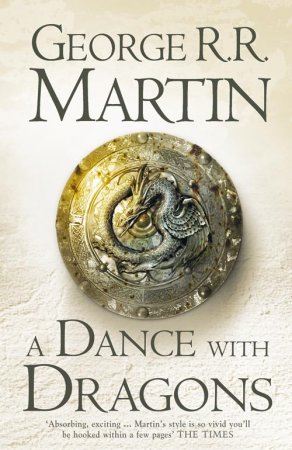 A Dance with Dragons
A Dance with Dragons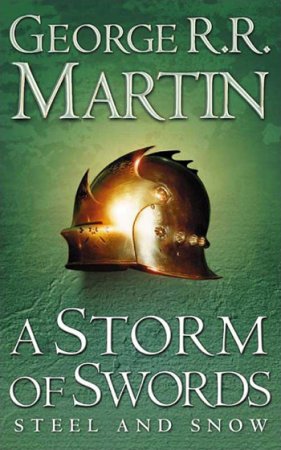 A Storm of Swords
A Storm of Swords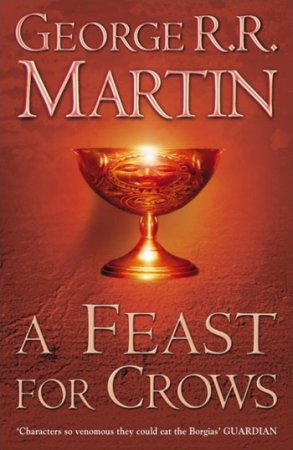 A Feast for Crows
A Feast for Crows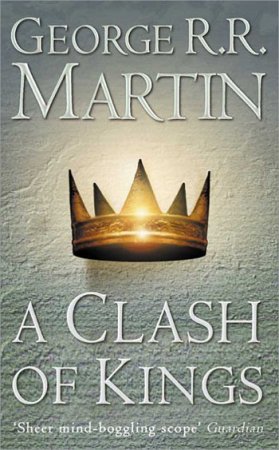 A Clash of Kings
A Clash of Kings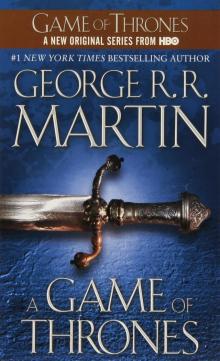 A Game of Thrones
A Game of Thrones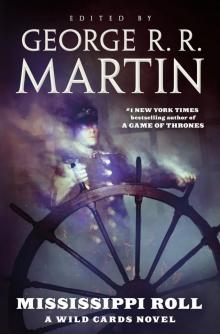 Mississippi Roll
Mississippi Roll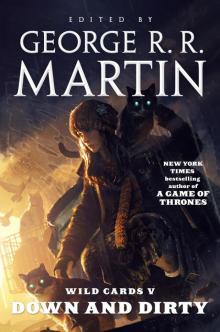 Wild Cards V: Down and Dirty
Wild Cards V: Down and Dirty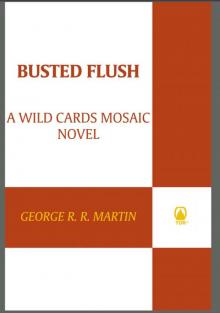 Busted Flush
Busted Flush When the Devil Drives
When the Devil Drives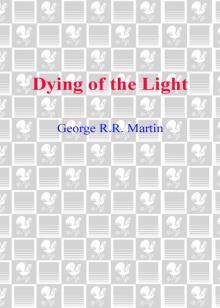 Dying of the Light
Dying of the Light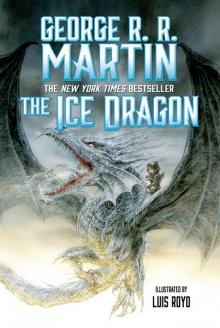 The Ice Dragon
The Ice Dragon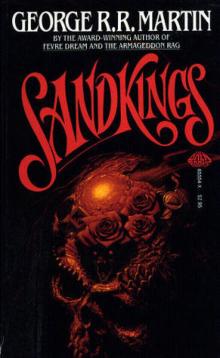 Sandkings
Sandkings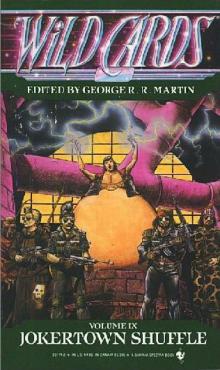 Jokertown Shuffle
Jokertown Shuffle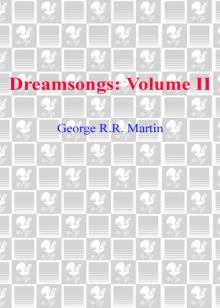 Dreamsongs. Volume II
Dreamsongs. Volume II Deuces Down
Deuces Down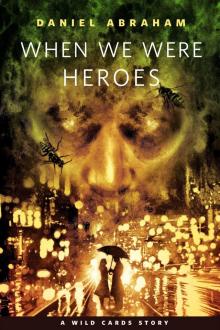 When We Were Heroes
When We Were Heroes Warriors
Warriors In the House of the Worm
In the House of the Worm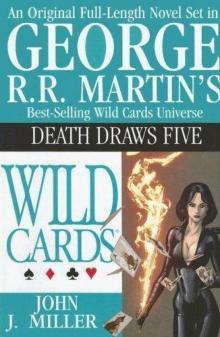 Death Draws Five
Death Draws Five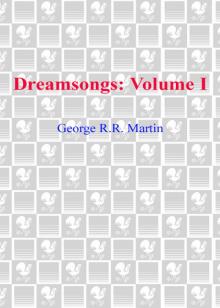 Dreamsongs. Volume I
Dreamsongs. Volume I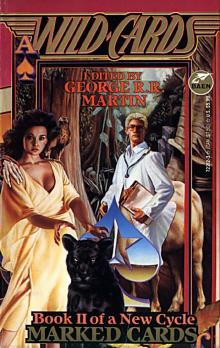 Marked Cards
Marked Cards Dreamsongs
Dreamsongs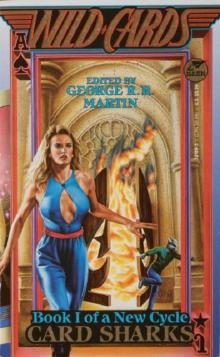 Card Sharks
Card Sharks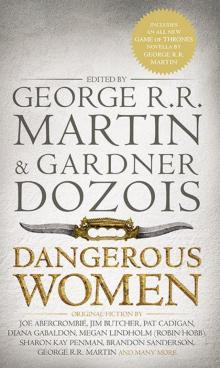 Dangerous Women
Dangerous Women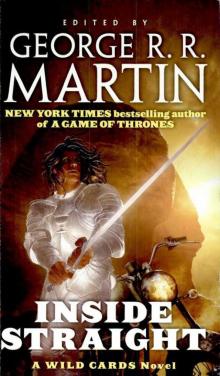 Inside Straight
Inside Straight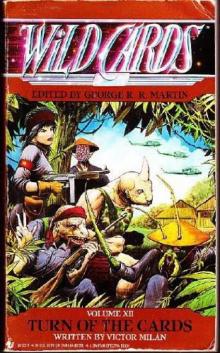 Turn of the Cards
Turn of the Cards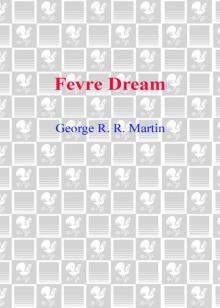 Fevre Dream
Fevre Dream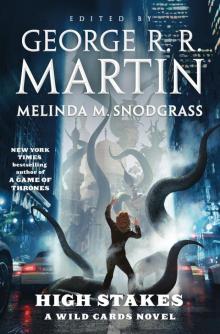 High Stakes: A Wild Cards Novel
High Stakes: A Wild Cards Novel Windhaven
Windhaven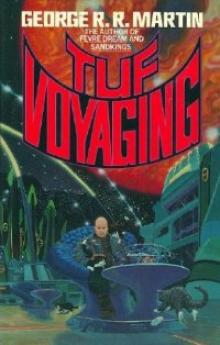 Tuf Voyaging
Tuf Voyaging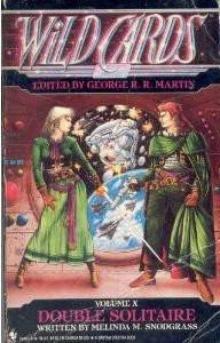 Double Solitaire
Double Solitaire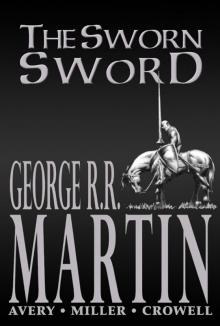 The Sworn Sword
The Sworn Sword Low Chicago
Low Chicago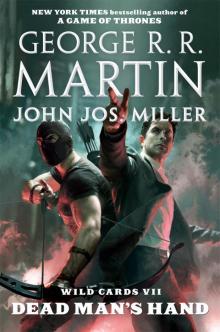 Dead Man's Hand
Dead Man's Hand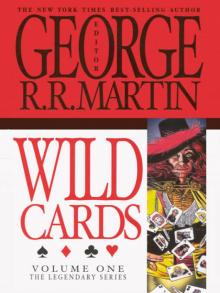 Wild Cards
Wild Cards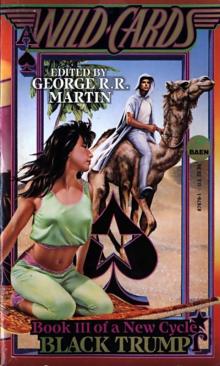 Black Trump
Black Trump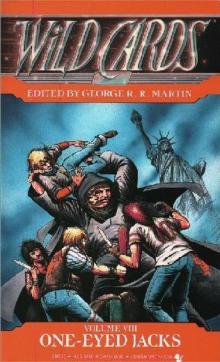 One Eyed Jacks
One Eyed Jacks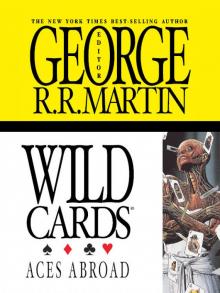 Wild Cards: Aces Abroad
Wild Cards: Aces Abroad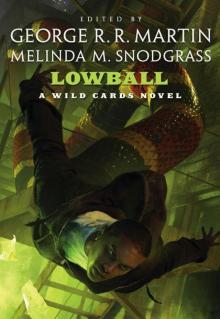 Lowball: A Wild Cards Novel
Lowball: A Wild Cards Novel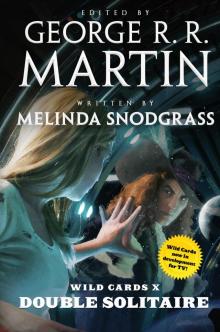 Double Solitaire (2019 Edition)
Double Solitaire (2019 Edition) Dealer's Choice
Dealer's Choice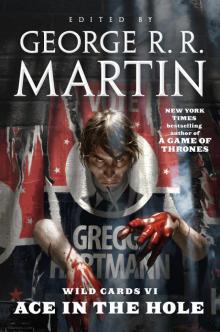 Ace in the Hole
Ace in the Hole A Song for Lya: And Other Stories
A Song for Lya: And Other Stories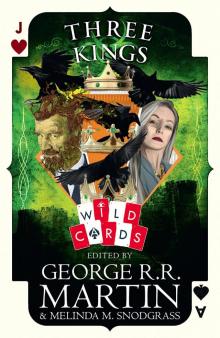 Three Kings
Three Kings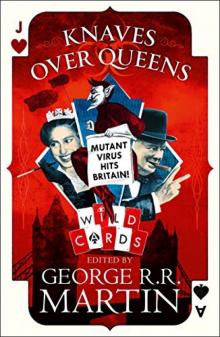 Knaves Over Queens
Knaves Over Queens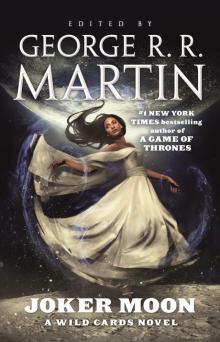 Joker Moon
Joker Moon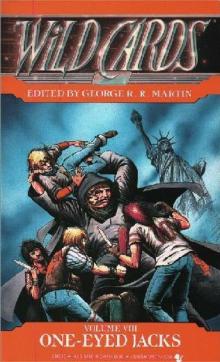 One Eyed Jacks wc-8
One Eyed Jacks wc-8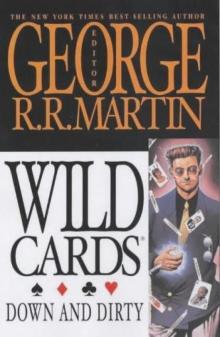 Down And Dirty wc-5
Down And Dirty wc-5 Mississippi Roll_A Wild Cards Novel
Mississippi Roll_A Wild Cards Novel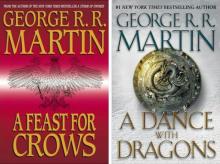 A Feast for Dragons
A Feast for Dragons The Sworn Sword ttodae-2
The Sworn Sword ttodae-2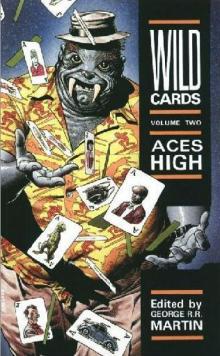 Aces High wc-2
Aces High wc-2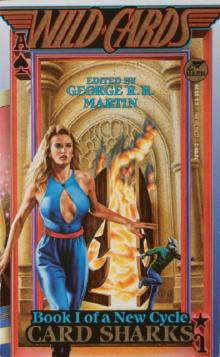 Wild Cards 13 : Card Sharks
Wild Cards 13 : Card Sharks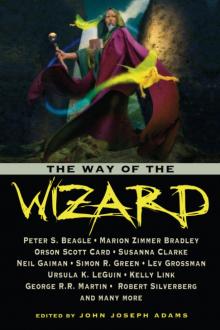 Way of the Wizard
Way of the Wizard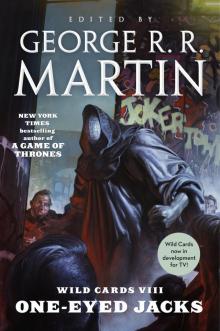 Wild Cards VIII: One-Eyed Jacks
Wild Cards VIII: One-Eyed Jacks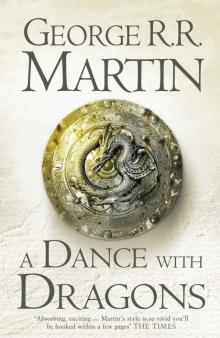 A Dance With Dragons: Book 5 of A Song of Ice and Fire (Song of Ice & Fire 5)
A Dance With Dragons: Book 5 of A Song of Ice and Fire (Song of Ice & Fire 5) The Princess and The Queen, Or, The Blacks and The Greens (a song of ice and fire)
The Princess and The Queen, Or, The Blacks and The Greens (a song of ice and fire)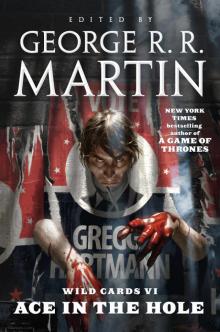 Wild Cards VI--Ace in the Hole
Wild Cards VI--Ace in the Hole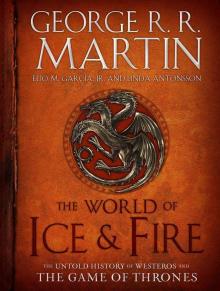 The World of Ice & Fire: The Untold History of Westeros and the Game of Thrones (A Song of Ice and Fire)
The World of Ice & Fire: The Untold History of Westeros and the Game of Thrones (A Song of Ice and Fire)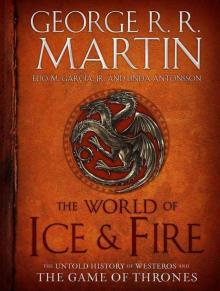 The World of Ice & Fire: The Untold History of Westeros and the Game of Thrones
The World of Ice & Fire: The Untold History of Westeros and the Game of Thrones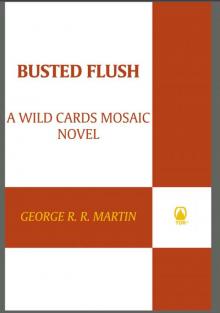 Busted Flush wc-19
Busted Flush wc-19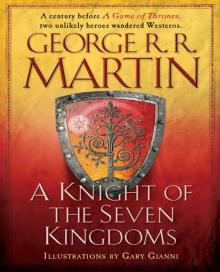 A Knight of the Seven Kingdoms
A Knight of the Seven Kingdoms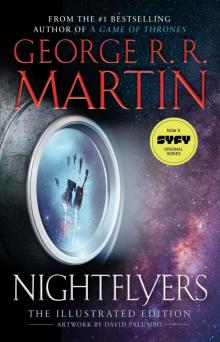 Nightflyers: The Illustrated Edition
Nightflyers: The Illustrated Edition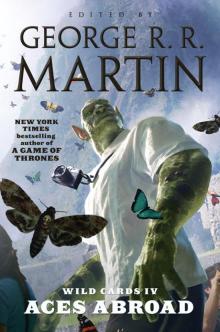 Wild Cards IV
Wild Cards IV Portraits of His Children
Portraits of His Children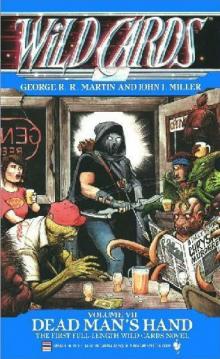 Dead Mans Hand wc-7
Dead Mans Hand wc-7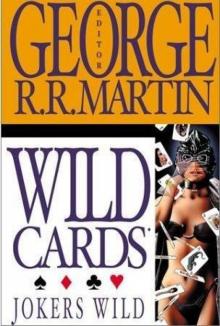 Jokers Wild wc-3
Jokers Wild wc-3 The Lonely Songs of Laren Dorr
The Lonely Songs of Laren Dorr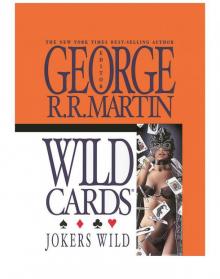 Wild Cards III: Jokers Wild
Wild Cards III: Jokers Wild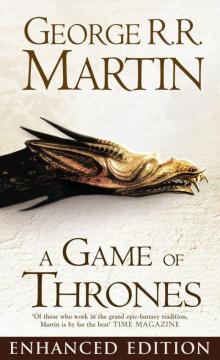 A Game of Thrones Enhanced Edition
A Game of Thrones Enhanced Edition Nightflyers & Other Stories
Nightflyers & Other Stories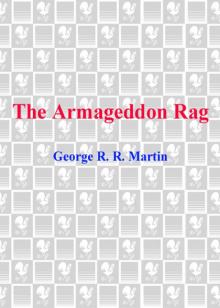 Armageddon Rag
Armageddon Rag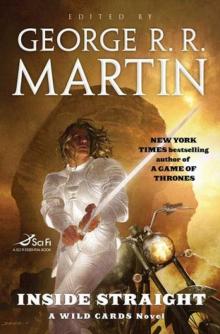 Wild Cards: Inside Straight
Wild Cards: Inside Straight A Song for Lya
A Song for Lya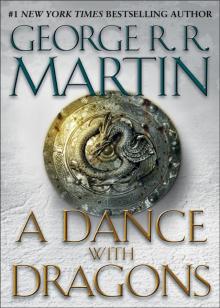 A Dance with Dragons: A Song of Ice and Fire: Book Five
A Dance with Dragons: A Song of Ice and Fire: Book Five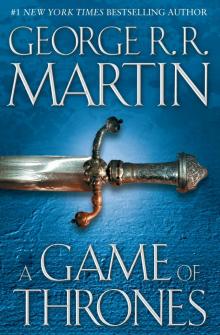 Song of Fire & Ice 01 - A Game of Thrones
Song of Fire & Ice 01 - A Game of Thrones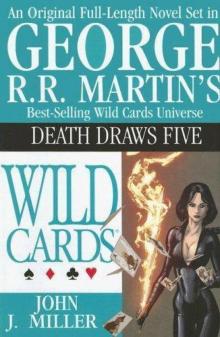 Death Draws Five wc-17
Death Draws Five wc-17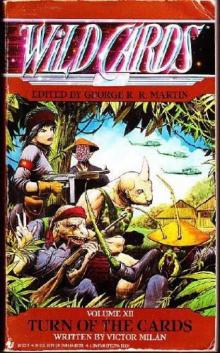 Turn of the Cards w-12
Turn of the Cards w-12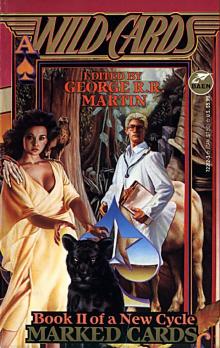 Wild Cards 14 - Marked Cards
Wild Cards 14 - Marked Cards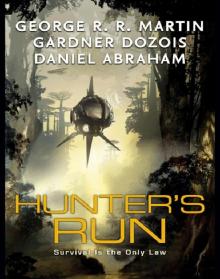 Hunter's Run
Hunter's Run The Glass Flower
The Glass Flower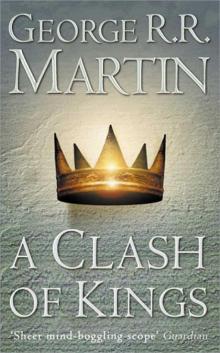 A Clash of Kings asoiaf-2
A Clash of Kings asoiaf-2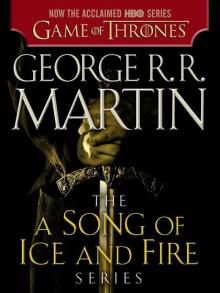 A Game of Thrones 5-Book Bundle: A Song of Ice and Fire Series: A Game of Thrones, A Clash of Kings, A Storm of Swords, A Feast for Crows, and A Dance with Dragons (Song of Ice & Fire)
A Game of Thrones 5-Book Bundle: A Song of Ice and Fire Series: A Game of Thrones, A Clash of Kings, A Storm of Swords, A Feast for Crows, and A Dance with Dragons (Song of Ice & Fire) Ace In The Hole wc-6
Ace In The Hole wc-6 Suicide Kings wc-20
Suicide Kings wc-20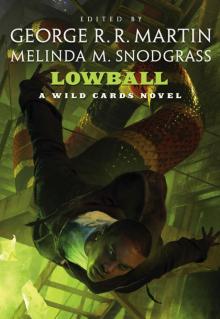 Lowball
Lowball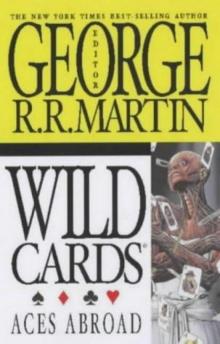 Aces Abroad wc-4
Aces Abroad wc-4 George R. R. Martin's a Game of Thrones 4-Book Bundle
George R. R. Martin's a Game of Thrones 4-Book Bundle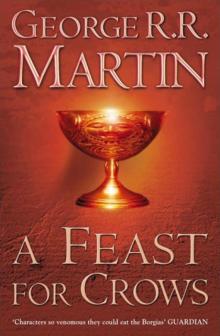 A Feast for Crows asoiaf-4
A Feast for Crows asoiaf-4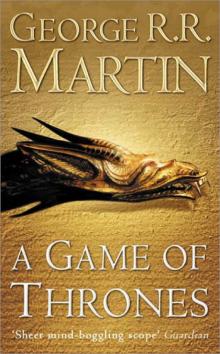 A Game of Thrones asoiaf-1
A Game of Thrones asoiaf-1 The Mystery Knight ttodae-3
The Mystery Knight ttodae-3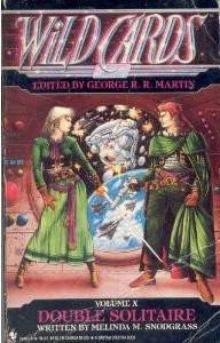 Double Solitaire w-10
Double Solitaire w-10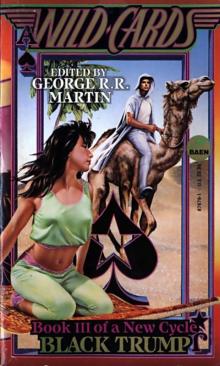 Wild Cards 15 - Black Trump
Wild Cards 15 - Black Trump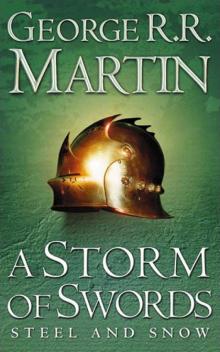 A Storm of Swords asoiaf-3
A Storm of Swords asoiaf-3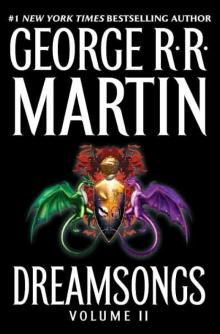 The Hedge Knight ttodae-1
The Hedge Knight ttodae-1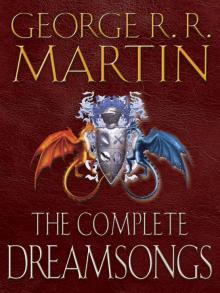 Dreamsongs 2-Book Bundle
Dreamsongs 2-Book Bundle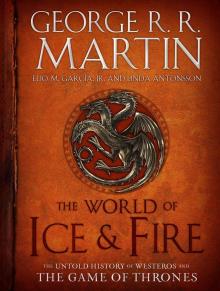 The World of Ice & Fire
The World of Ice & Fire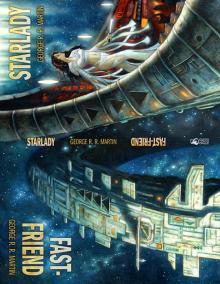 Starlady & Fast-Friend
Starlady & Fast-Friend Old Mars
Old Mars Fantasy For Good: A Charitable Anthology
Fantasy For Good: A Charitable Anthology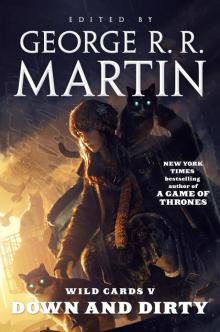 Wild Cards V
Wild Cards V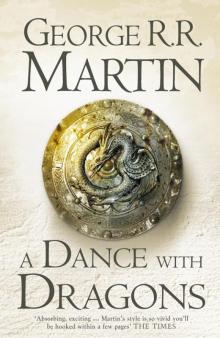 A Dance with Dragons asoiaf-5
A Dance with Dragons asoiaf-5 Dealer's Choice w-11
Dealer's Choice w-11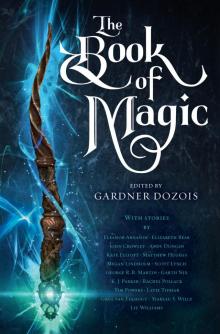 The Book of Magic
The Book of Magic A Game of Thrones 4-Book Bundle
A Game of Thrones 4-Book Bundle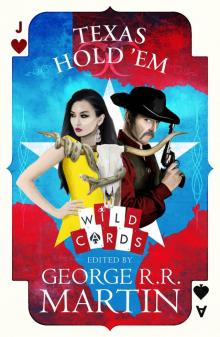 Texas Hold 'Em
Texas Hold 'Em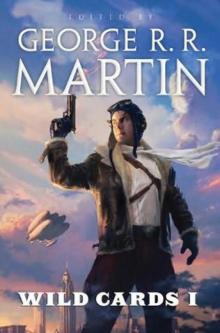 Wildcards wc-1
Wildcards wc-1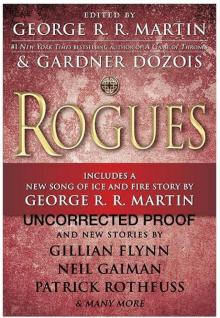 Rogues
Rogues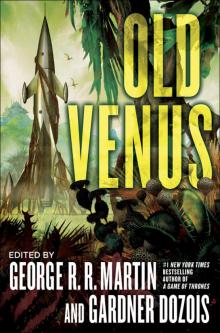 Old Venus
Old Venus